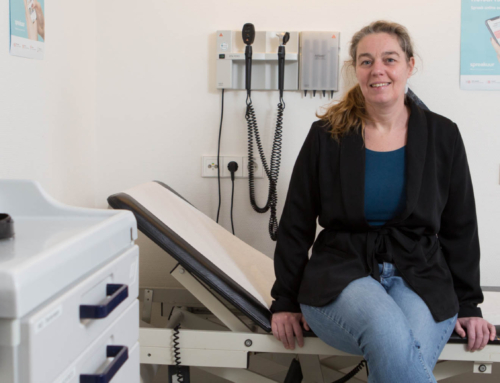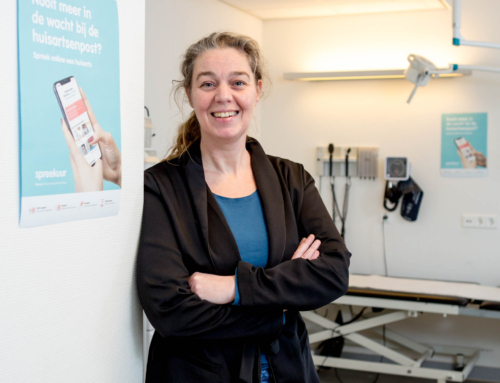Towards a new model for health care demand typing and funding
The funding model of medical mental health care (mental health care) is due for replacement, many different parties agreed on this. In 2015 started the Dutch Healthcare Authority (NZa), commissioned by the Ministry of Health, Welfare and Sport (VWS), therefore a process to further develop the alternative care cluster model. All parties involved participated 2015 their commitment, but the trajectory caught on 2018 spaak.
Intention: A better funding system
In the current system, after a diagnosis, the healthcare provider draws up a treatment plan based on the diagnosis-treatment combination(dbc)-product structure. A funding system is linked to this. The problem with this approach is that the predetermined diagnosis-treatment combinations find little connection with the practice of individual clients. After all, not all patients with the same diagnosis benefit from exactly the same treatment; one depression is not the other. Moreover, this structure makes it difficult to predict healthcare costs, it creates a high administrative burden and contains perverse financial incentives that lead to strategic billing behavior.
“Not all patients with the same diagnosis benefit from the same treatment.”
That is why there has been a need for some time not to supply, but to take care demand as the starting point for models for care demand typing and funding. A new model should also make spending more equitable and efficient. The "English model", or the healthcare cluster model, in which patients are divided into different clusters based on the severity of their care demand, seemed like a suitable alternative.
Approach: A broad coalition is working on the English model
In 2015 various parties involved in the dbc product structure formed a broad coalition (National Psychological Health Platform (LPGGz), Netherlands Institute for Psychologists (NIP), Dutch Hospitals Association (NVZ), the Dutch mental health care, Dutch Federation of University Medical Centers (NFU), Dutch Psychiatric Association (NVvP), Federation of Medical Specialists (FMS), National Association of Independent Psychologists and Psychotherapists (LVVP), NZa, Forensic Care Department (DForZo)/Custodial Institutions Agency (DJI) and the Association for the Disabled Care Netherlands (VGN). Together they offered Minister Schippers the "Agenda for appropriate use and transparency", in which they proposed the English model as an alternative. Under the leadership of the NZa, the parties sat down to further develop the English healthcare cluster model and make it suitable for the Dutch situation.. This happened on two parallel tracks: the funding system and the care-related structure, or the care demand classification.
In 2017 started a pilot with the new model. The NZa launched the website zorgclustertool.nl, where practitioners could register and fill in questionnaires about their patients and their care needs. On the basis of these lists, so-called clusters were proposed that may fit the patient's care needs, with the aim of one of the 22 clusters. The pilot ran until 31 december 2019.
In 2015 various parties involved in the dbc product structure formed a broad coalition (National Psychological Health Platform (LPGGz), Netherlands Institute for Psychologists (NIP), Dutch Hospitals Association (NVZ), the Dutch mental health care, Dutch Federation of University Medical Centers (NFU), Dutch Psychiatric Association (NVvP), Federation of Medical Specialists (FMS), National Association of Independent Psychologists and Psychotherapists (LVVP), NZa, Forensic Care Department (DForZo)/Custodial Institutions Agency (DJI) and the Association for the Disabled Care Netherlands (VGN). Together they offered Minister Schippers the "Agenda for appropriate use and transparency", in which they proposed the English model as an alternative. Under the leadership of the NZa, the parties sat down to further develop the English healthcare cluster model and make it suitable for the Dutch situation.. This happened on two parallel tracks: the funding system and the care-related structure, or the care demand classification.
“The funding model of medical mental health care needs to be replaced.”
Result: Too little agreement and an alternative model
During the process it soon became apparent that it would be difficult to reach an agreement. Some parties felt that the English model had been hastily chosen as a guideline and that it was wrongly assumed that it would work in the Netherlands (The success in the United Kingdom was also questioned).
Visions began to diverge and cooperation became less and less constructive. Interventions could not prevent different parties from entering 2018 withdrew their support, before the end of the pilot. In an evaluation of the process surrounding the development of the care client model, various parties indicate that it is important that all parties participate, both field parties and law- and regulators.
At the insistence of VWS, the parties nevertheless continued to develop a new model. In 2019 a modified coalition proposed an alternative model, the care performance model mental health care and fz. The lessons learned from the care cluster model process have been incorporated into the development of this model. The care cluster model has since been further developed and improved and is reflected in the care performance model as an instrument for care demand typing. In the improved version, the administrative burden is reduced and particularly heavy patient groups can be better recognized. The model will be per 2022 implemented.
Learning moments and perspectives for action
Banana peel – An accident is in a small corner
Sometimes you notice a problem, but you are not aware of how great the consequences will be. In this case, it turned out that various parties had little confidence in the process, which became a big problem: they dropped out early.

The empty chair – Not all relevant people become involved
All relevant parties sat at the table, but they had not always sufficiently consulted their supporters. Moreover, the extent to which different parties contributed to the development of the care cluster model was not evenly distributed, as a result of which the results of the process did not match the needs equally well for each party.

Canyon - Worn in cartridges
It was difficult for the coalition to think outside of ingrained patterns and to go to the drawing board with an open mind. Several parties quickly assumed that the English model was the right choice, while the pilot was not yet fully completed. On the other hand, there were parties who quickly concluded that the care cluster model was not usable at all. It is positive that it was nevertheless managed to build on the results of the care cluster model after the process was discontinued.

Wrong wallet – The advantage of the one is the disadvantage of the other
In the old model, there were perverse incentives for healthcare providers that led to strategic billing behavior - they did comply with the rules, but not the intentions of the model. It was not entirely clear what the consequences of the new model would be on their wallets.









